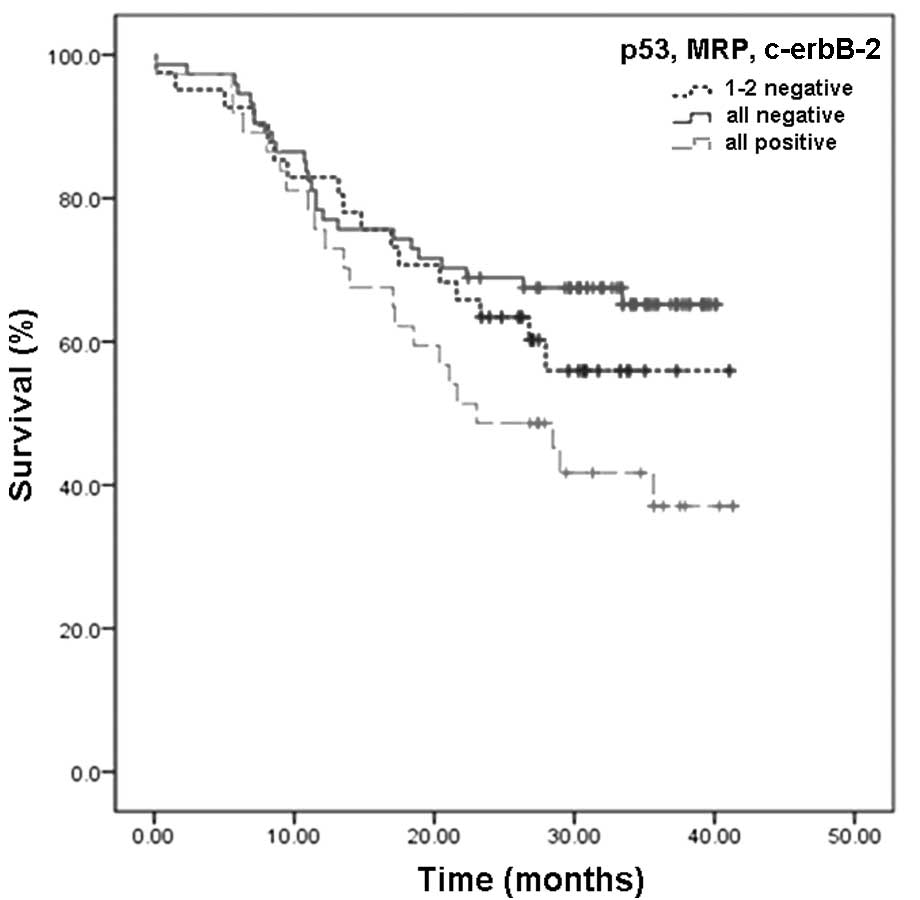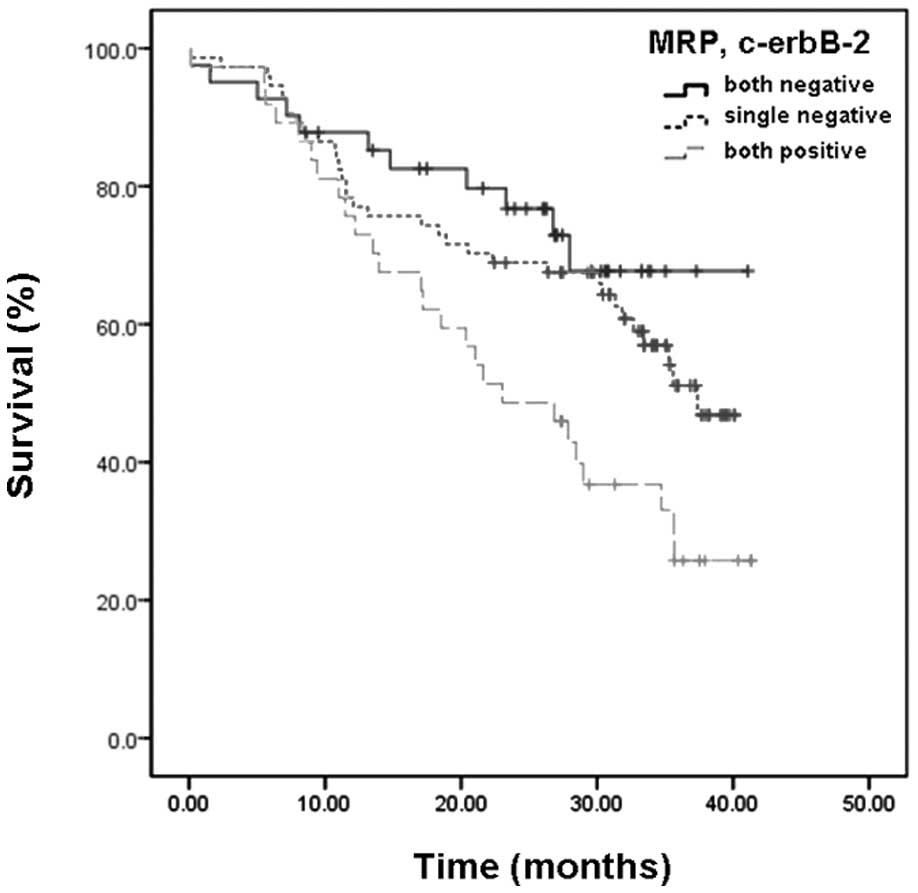Positive expression of p53, c-erbB2 and MRP proteins is correlated with survival rates of NSCLC patients
- Authors:
- Published online on: January 24, 2013 https://doi.org/10.3892/mco.2013.72
- Pages: 487-492
Metrics: Total
Views: 0 (Spandidos Publications: | PMC Statistics: )
Total PDF Downloads: 0 (Spandidos Publications: | PMC Statistics: )
Abstract
The incidence of lung cancer is one of the leading causes of mortality. This study aimed to investigate the prognostic and predictive importance of p53, c‑erbB2 and multidrug resistance proteins (MRP) expression and its correlation with clinicopathological characteristics of patients with non‑small cell lung cancer (NSCLC). Expression of p53, c‑erbB2 and MRP proteins in 152 tumor samples from resected primary NSCLCs was detected by immunohistochemical staining. The correlation of proteins, survival and clinicopathological characteristics was investigated in 152 patients undergoing potentially curative surgery. The positive rates of p53, c‑erbB2 and MRP expression were 53.9 (82/152), 44.1 (67/152) and 43.4% (66/152), respectively. Overall survival rates of patients were markedly correlated with the overexpression of p53, c‑erbB2 and MRP proteins. One, 2- and 3-year survival rates of patients exhibiting a positive expression of these proteins were 72.6, 54.8 and 32.2%, respectively. These rates were lower compared with those of patients with a negative expression of these proteins (92.1, 78.5 and 63.4%) (P=0.02, 0.01 or 0.00, respectively). Results of Cox's regression analysis showed that c‑erbB2 expression and cell differentiation were independent prognostic factors in patients with NSCLC. These findings suggest that the positive expression of p53, c‑erbB2 and MRP proteins is correlated with the survival rates of NSCLC patients. Detection of positive p53, c‑erbB2 and MRP expression may be a useful predictive indicator of prognosis. Positive c‑erbB2 expression is an independent prognostic factor, with a potential to be used as a predictive indicator of chemotherapy efficacy in NSCLC patients.












